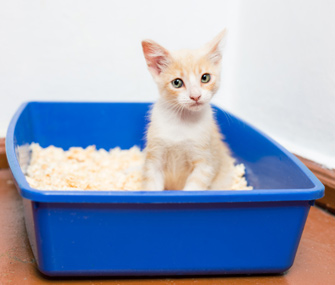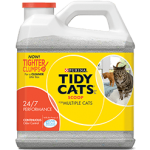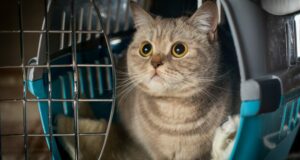clumps, clay, crystals and more!
Cat litter: every cat parent needs it, every new cat owner is overwhelmed by the vast number of choices, and every multiple cat owner is trying to find the most effective brand. You’ve got clumping vs. non clumping, clay vs. silica vs. biodegradable vs. flushable… where do you even start?

If you’re a new cat caregiver with a shiny new kitten, choosing the type of litter you want to use will likely depend on your personal preferences and it will be easy to litter train your kitten because they haven’t developed a preference for a particular texture yet. What I’m trying to say (gracefully) is that cats can be downright snobby about the type of litter they’ll use.
I’m sure you’re all gasping at the implications. You’re probably saying, “My cat, a snob? Never!” I’m not being judgmental, but in my experience with cats, they generally tend to be extremely picky about everything in their environment. My cats don’t tolerate change and if they don’t get their way they’re going to go on a hunger strike or pee in my purse. Trust me; it’s not as fun as it sounds. To illustrate: they will only use one type of litter (Feline Pine) eat one kind of food (Friskies, the pate, not chunked), and any guest spending the night leaves me wondering where and when I’ll find the proverbial pee in the purse!
How do you change the type of litter you use without protest from the felines?
 Oh no, so you have an adult cat and want to change litters for some of the reasons we’ll discuss later in the article? All is not lost! You can gradually introduce a new type of litter; it just takes a little bit of time. Here are the steps; it’s pretty similar to how you might change up your dog or cat’s food.
Oh no, so you have an adult cat and want to change litters for some of the reasons we’ll discuss later in the article? All is not lost! You can gradually introduce a new type of litter; it just takes a little bit of time. Here are the steps; it’s pretty similar to how you might change up your dog or cat’s food.
- Choose your new cat litter of choice and buy a bag
- Also buy a bag of your old cat litter
- Fill a clean litter box with 90% of your old cat litter and 10% or your new litter
- Scoop the poop daily
- Replace a little bit of the old litter with more of the new litter with each litter box cleaning until you’re fully using the new litter
- Take #5 slowly, this process can last a few weeks
- If your cat starts retaliating (by “going” outside the box), first reevaluate your new litter choice (is it scented and maybe it is bothering their nose) or take #5 even more slowly until your cat acclimates to your new litter
- Ta Da!
Just a note, sometimes when cats start going potty outside of their box, it can mean there is a medical problem (like a urinary tract infection) going on. It is always best to consult with a vet if you’re not sure why your cat suddenly stopped using the litter box.
Now the nitty-gritty: How to choose the best cat litter
It might be best to start of this section by explaining the different types of cat litter. All litters have one job: to absorb urine and cover cat feces while reducing odor. Each type of litter accomplishes this a litter differently.
 Clay based clumping cat litter – Excellent clumping formulas make it easy to clean the litter box. Just remove the clumps daily and replace the rest of the litter infrequently, say once every month or so depending on the number of cats you are caring for. It is available in flushable/biodegradable formulas. My experience: You’ve got to scoop once daily at the least, more if you can. Otherwise you’ll have a thick crust over the top of the box and you’ll need to empty the whole thing.
Clay based clumping cat litter – Excellent clumping formulas make it easy to clean the litter box. Just remove the clumps daily and replace the rest of the litter infrequently, say once every month or so depending on the number of cats you are caring for. It is available in flushable/biodegradable formulas. My experience: You’ve got to scoop once daily at the least, more if you can. Otherwise you’ll have a thick crust over the top of the box and you’ll need to empty the whole thing.
Clay based non clumping cat litter – This is pretty much the same as the clay clumping formula, except it doesn’t clump the urine into neat little balls that can be scooped daily. This means that you’ll need to empty the whole box more often, once a week or so. My experience: It has been many many years since I used this type of litter, but I remember it being very dusty. It was the number one reason I chose to change to Feline Pine. They have since introduced dust free varieties, but I haven’t tried them and can’t comment on their effectiveness.
Crystals or silica based cat litter – This type of litter is made from sand and is said to be a bit easier on the cat’s lungs than clay based litters, but both types are non-toxic. This type is another non-clumping variety, so you’ll need to empty the box more often, but it is said to be more effective for odor control and absorption. My experience: I’ve never used this type of litter, and can’t comment. I have colleagues who swear by Litter Pearls, so it must be acceptable to their feline friends.
Natural or biodegradable cat litter – This type of litter is often made from pine, newspaper, wheat or corn. Some types are available in a clumping formula, and others do not clump. They are all biodegradable, usually flushable, and non-toxic. Most are also dust free so they’re great for humans who have dust allergies. My experience: I’ve been using Feline Pine for over 7 years now. My cats prefer the pellet texture. It controls odors so long as you scoop regularly and empty the box every week or two. It also doesn’t track all over the house due to the large particle size. I also don’t have to worry if the dogs eat some of it (it happens when they’re searching for buried treasure) because it is non-toxic.
 You’re saying “But, how do I choose the best one?” The answer is that it depends on what you’re looking for in a cat litter. If you ask my cats, they’d tell you its original Feline Pine. Scoop poo daily and empty the entire box every week.
You’re saying “But, how do I choose the best one?” The answer is that it depends on what you’re looking for in a cat litter. If you ask my cats, they’d tell you its original Feline Pine. Scoop poo daily and empty the entire box every week.
Are you looking for a way to make cat ownership more environmentally friendly? You might want to consider Yesterday’s News or other cat litter made from recycled materials.
Are you worried about respiratory health? Consider a dust-free crystal or natural cat litter
Do you want to minimize the number times you’ll need to completely empty the litter box? Go for a clumping formula.
Do you share a bathroom with the litter box and need to control odor? Look for a scented variety (though some cats don’t like the smell, you may be better off with an automatic cat litter box to minimize odors).
 That Pet Blog That Pet Place Pet Blog
That Pet Blog That Pet Place Pet Blog


